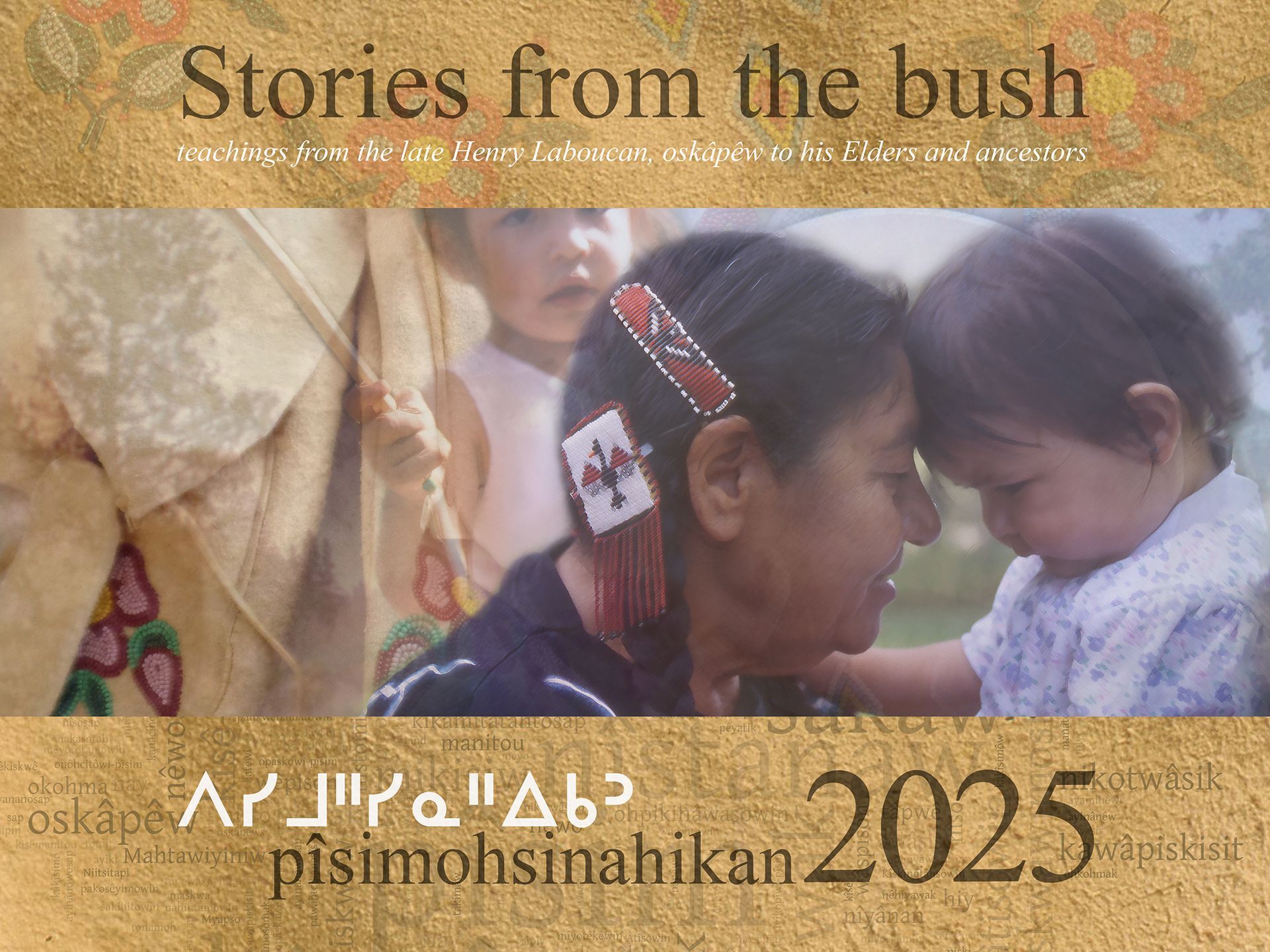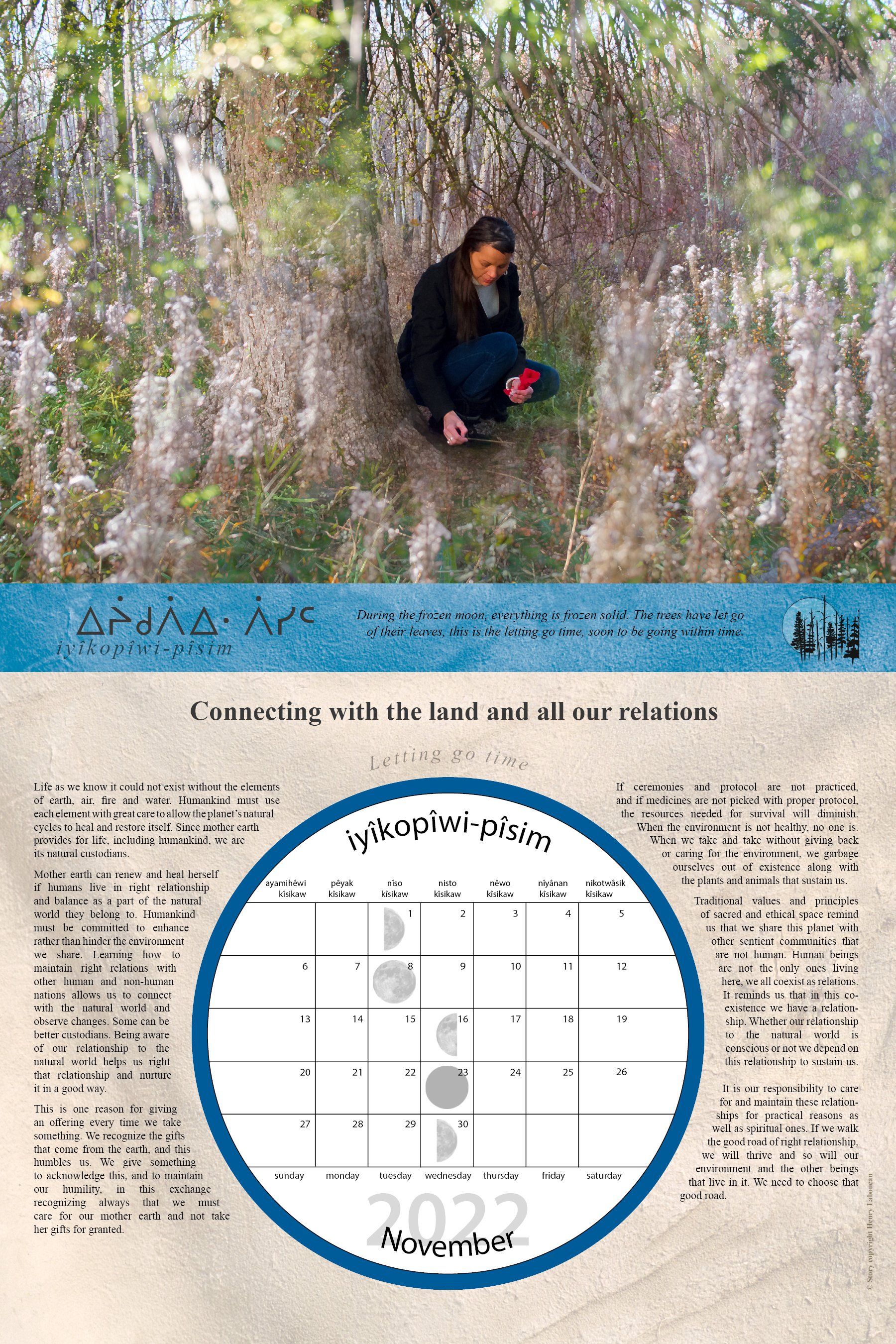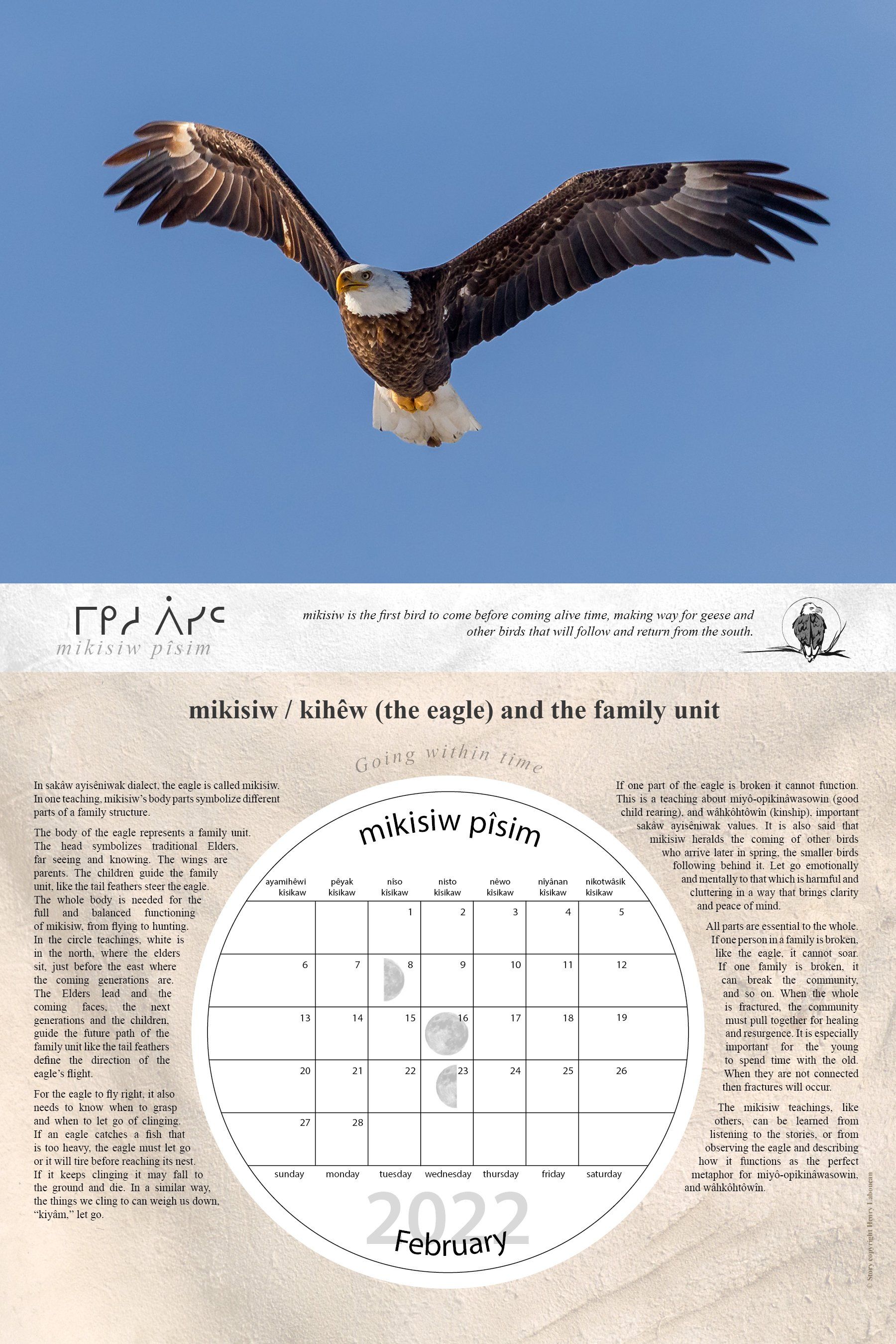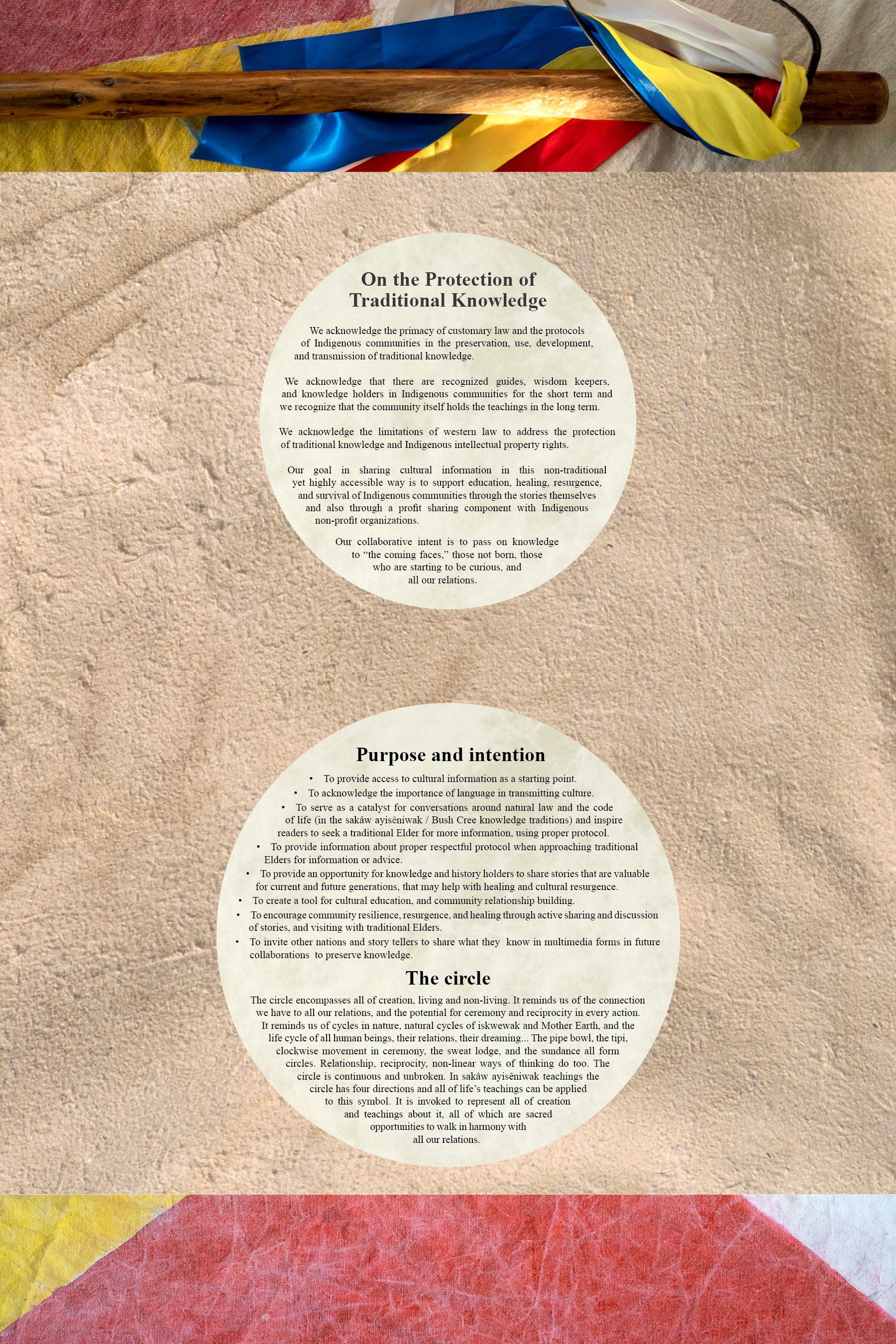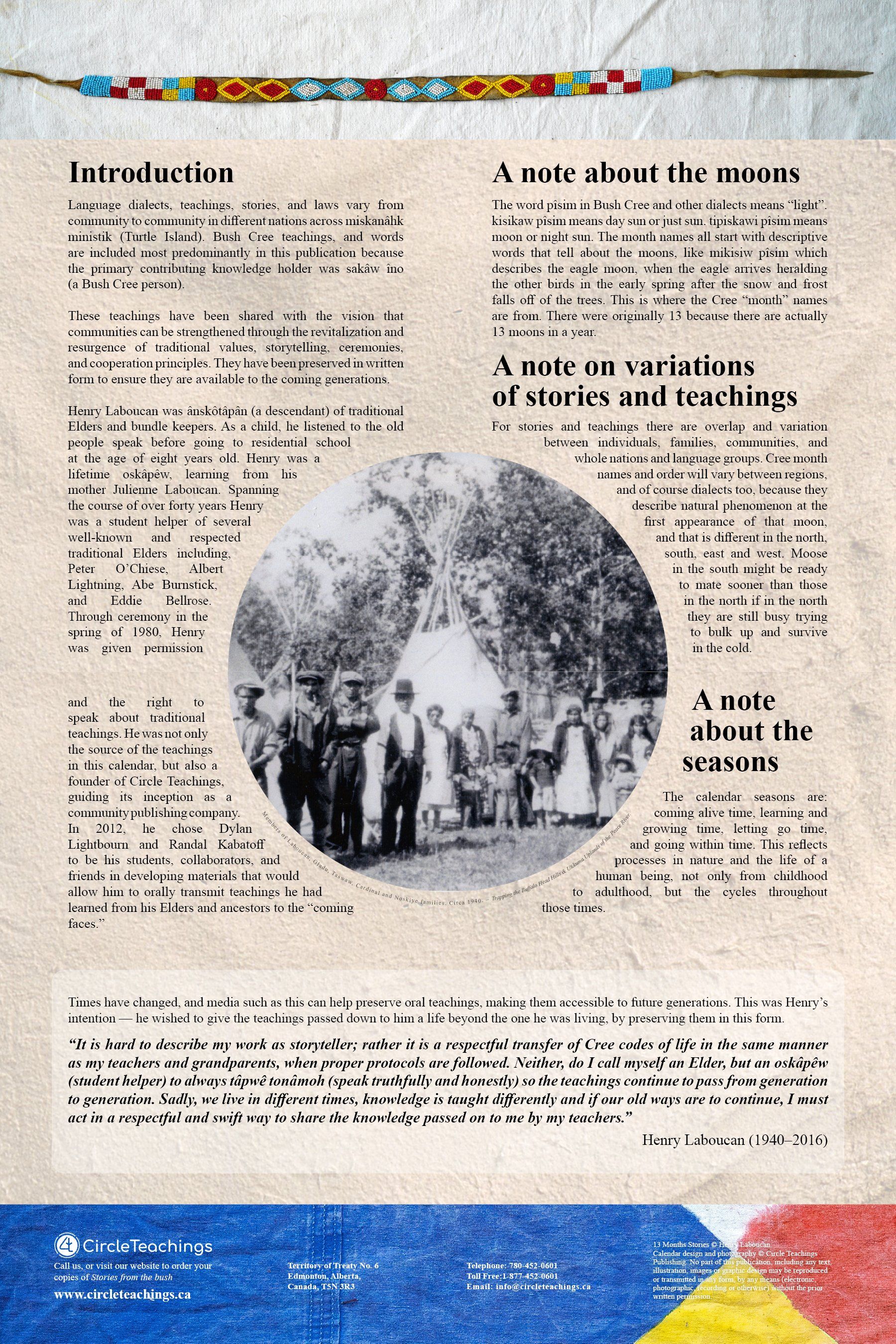STORIES FROM THE BUSH
Language dialects, teachings, stories, and laws vary from community to community in different nations across miskanâhk ministik, Turtle Island. Bush Cree teachings and words are included most predominantly in this publication, because the knowledge holder who shared their teachings is sakâw îno, a Bush Cree person.
These teachings have been shared with the vision that communities can be strengthened through the revitalization and resurgence of traditional values, storytelling, ceremonies, and cooperation principles. They have been preserved in written form to ensure they are available to the coming generations.
The late Henry Laboucan is ânskôtâpân (a descendant) of traditional Elders and bundle keepers. As a child he listened to the old people speak before going to residential school at the age of eight years old. Henry-pan was a lifetime oskâpêw, learning from his mother, the late Julienne Laboucan, and several well-known and respected traditional Elders spanning the course of over forty years.
Through ceremony in the spring of 1980, Henry-pan was given permission and the right to speak about traditional teachings. He preferred sharing his teachings in the traditional way of oral storytelling. They have been recorded in written form here with the help of Dylan Lightbourn (writer), and Randal Allan Kabatoff (publisher).
Times have changed, and media such as this can help preserve oral teachings and make them accessible to future generations. This is the late Henry Laboucan's intention; he wished to give the teachings passed down to him a life beyond the one he lived, by preserving them in this form.
Included in this resource are:
- History timeline from the 17th century to today.
- Sixty photographs and illustrations are included to accompany both the timeline and story months.
- Fourteen stories that introduce teachings shared by Henry Laboucan.
- paktinâsiwin (protocol)
- blood memory
- kiskinohtahisowin and manaciwaskawêwin, feather teachings
- wâspison and wêpison, moss bag and swing for good child rearing
- ne wi yaw âtisowin / nehiyaw âtisowin, four bodies living skills
- earning the right to a mate and child
- mikiwahp teachings; women's lodge
- health and mental and emotional clutter
- miskinâhk ministik, turtle island
- connecting with the land and all our relations
- many winters
- code of life and the beauty ways
- mikisiw / kihêw (the eagle) and the family unit
- kawâpiskisit paskwâwimostosis iskwêw mena kâkîsimôw ospwâkan
- Cree words, syllabics and English convey the teachings.
- Altogether, 40 pages full of colour images and 9,000 words.
Frequently Asked Questions
CITATIONS FOR CALENDAR TIMELINE
Selected Books
Treaty Essential Learnings: We Are All Treaty People. Saskatoon: Office of the Treaty Commissioner, 2008.
Epp, Roger. We Are All Treaty People: Prairie Essays. Edmonton: U of Alberta, 2008.
Martin-Hill, Dawn. The Lubicon Lake Nation: Indigenous Knowledge and Power. Toronto:
U of Toronto, n.d. Print.
Opekokew, Delia. The First Nations: Indian Government and the Canadian Confederation. Saskatoon: Federation of Saskatchewan Indians, 1979.
Sweeny, Alastair. Government Policy and Saskatchewan Indian Veterans: A Brief History
of the Canadian Government’s Treatment of Indian Veterans of the Two World Wars. Ottawa, On.: Tyler, Wright & Daniel Ltd., 1979.
Woodland Cree First Nation Bear Trap Trappers' Committee. Trapping the Buffalo Head Hills & Utikuma Uplands of the Peace River Region. Edmonton, Alta.: Alberta Book Bindery, 2006.
Selected Websites
"Cree Culture and History." Native Americans. Native Languages of the Americas, n.d. Web. 13 Dec. 2016. <http://www.native-languages.org/cree_culture.htm>.
Cree Literacy Network. Web. 13 Dec. 2016. <http://creeliteracy.org/>.
The Making of Treaty 8 in Canada's Northwest. University of Alberta, 2002. Web. 13 Dec. 2016. <http://wayback.archive-it.org/2217/20101208160658/http://www.albertasource.ca/treaty8/eng/default.htm >.
http://www.kairoscanada.org/missing-murdered-indigenous-women-girls/inquiry-timeline/
Lackenbauer, P. Whitney., John Moses, R. Scott. Sheffield, and Maxime Gohier. Commemorative History of Aboriginal People in the Canadian Military. Ottawa: Department of National Defence. Government of Canada Publications, 2009. Web. 13 Dec. 2016. <http://publications.gc.ca/collections/collection_2010/forces/D2-250-2-2009-eng.pdf>.
Michell, Herman. "Bush Cree Storytelling Methodology: Northern Stories That Teach, Heal, and Transform." In Education. University of Regina, 2015. Web. 13 Dec. 2016. <http://ineducation.ca/ineducation/article/view/213/815>.
